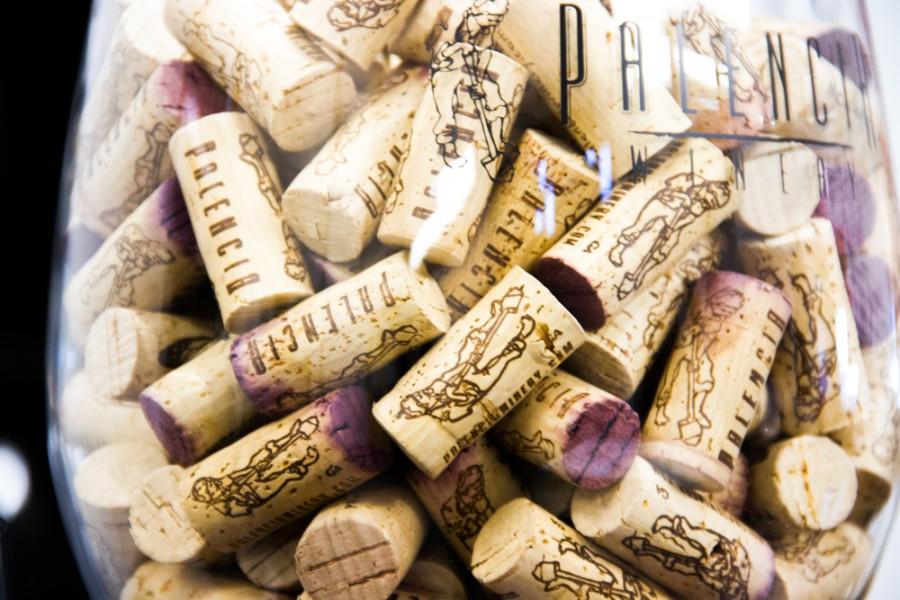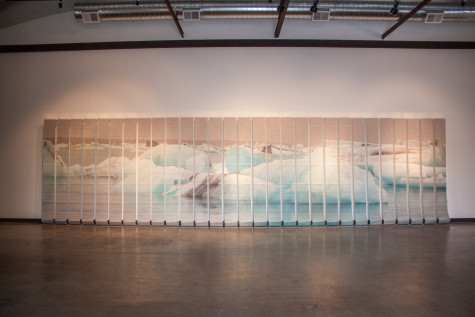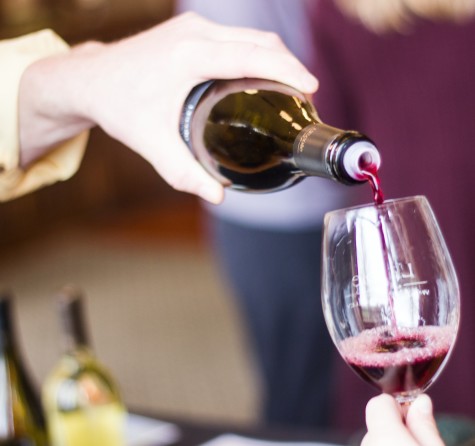Greater than the grape
January 28, 2016
On Thanksgiving day in the balmy bosom of Bushwick, Brooklyn, Williams College Alumni pass around a jug of Carlo Rossi Burgundy and in succession perform the “Rossi Lean.” The Lean, yet to make full landfall in the west, is a popular party trick across this nation’s Northeast Corridor. The subject grasps the glass Carlo Rossi jug with his pinky alone, rotates his hand palm outwards in a wholly unnatural motion, and uses the crook of his shoulder to support the heft as with the single miniature finger he raises the lecherous potion skyward, leans his torso backwards, and pours the sweet nectar within.
Danika Rothwell (’16), who has now been working as a tasting room assistant at Palencia Wineries in Walla Walla for over half of a year, laments that her time for such frivolous low-end wine consumption has passed. In her days of yore, she says wine stood “on a scale of manageability. Can you drink this, yes or no?”
But with experience in the wine industry (her work includes some “testing”) her tastes have sharpened, her palate refined. The tasting notes for one of Victor Palencias most popular varietals reads: “A 30-day fermentation in Hungarian oak gives this Albariño its golden yellow color and supple mouthfeel & texture…The flavors of apple, peach, pear and lemon zest are framed with bright minerality that coats and refreshes the palate.” How to imagine that? To describe a taste is no simple thing. Taste is mechanical in the chemical sense, but it is also personal. The sensation blurs into the private space of cognition.
The wine of Victor Palencia, for example, is said to have a great nose – its smell is rich and dynamic. The acidity and sweetness of the wine, says Danika, are extremely well balanced – dry despite high residual sugars. But how does one characterize an experience so idiosyncratic? As an outsider, it’s easy to be skeptical. Direct from the interview tape: Is [wine] a lie or is it a true thing?

“I think it’s a true thing,” says Danika. “Hearing Victor [Palencia] talk about it, certain vineyards you can go fifteen feet up the hill or fifteen feet down and it’s a completely different grape, because of the way the breeze blows, or because of the intensity of the sun’s rays.”
Indeed, Palencia says that his talent is in vineyard assessment; he can walk on the scene and tell you within a matter of minutes the quality of this operation and of the certain grapes it produces. This is important, because the nature of a wine is largely dependent on the grape from which it was spawned. For example, the Ancient Lakes area of Washington from which Palencia gets his Albariño is rich in the same sorts of minerals as Galicia, in Northwest Spain, and accounts for much of its award winning flavor.
Palencia, who is young and Latino, unique in an industry dominated by older white men (though this is changing), is concerned with love and respect for the land. The grape reflects the land and the land is a tale of all who ever have and ever will inhabit it. Imbedded within his wine is the story of his family’s immigration from Michoacan county in Mexico, the land of the Monarch Butterfly, to Prosser, Washington, where his father worked in the fields, where the options were wine or football, where his dream of owning his own winery spawned and incubated as he traveled across the Columbia River Valley to Walla Walla Community College’s Enology and Viticulture School to study the art. The Albariño’s label features a sketch of Palencia’s father, shovel in hand.
—
The Columbia Valley, which comprises much of the river’s vast network of tributaries, is home to some of the finest viticultural conditions in the country, and over 120 wineries. Latitudinally the region sits in close proximity to Burgundy and Bordeaux, wine havens world renowned. Unlike the French, grape growers of Washington must irrigate their crops, but the silt infused soil, a remnant of the great Missoula flood, to which we owe the Wallula Gap and much of the Columbia River Basin, is particularly conducive to the drip methods these days so pervasive.
The land has attracted the scholarship of Professor of Geology Kevin Pogue, whose geological talents were focused on the tribal regions of Northern Pakistan when 9/11 rendered the work impractical and dangerous.
A wine lover himself living in a town in the midst of a significant boom in the industry, he decided to shift his attention to “the lab in his backyard.” Fifteen years later, he consults for the Washington State Wine Commission, is writing a book on the region’s terroir, teaches a class here at Whitman on terroir, and has become an institution in the regional and national wine community.
Pogue, who has lived in Walla Walla since 1990, recently dined at the Brasserie Four on Main Street. It was packed… on a Wednesday night … in January. Prior to the wine boom, which began around 1998, he says that such a concept was inconceivable in this town.
Of course wine does root deep in this region. Nearly two hundred years ago the Hudson Bay Company planted the Cinsaut at Fort Vancouver, from whose fermented juices Narcissa Whitman, a teetotaler, proudly wrote that she would “never partake.” Not long after, as Italian settlers poured into the Columbia Valley and noted that the climate was not a little like home, all sorts of European strains were planted, became fruitful, and multiplied.
Gold Rush’s were a boon, but deep freezes, the fateful decision of the Northern Pacific Railroad to bypass Walla Walla in favor of Spokane, and prohibition effectively destroyed the wine industry until the seventies. The Marcus Whitman Hotel, founded during prohibition, fell into disrepair in the middle of the century and remained so until Kyle Mussman bought and revamped the hotel beginning in 1999. Walla Walla, already home to some exceptionally talented winemakers, suddenly became a destination. Walla Walla Community College Enology and Viticulture program opened for business. Critical Mass in the shadow of the Blues.
Among the downtown tasting rooms is that of Mark Ryan Winery, where wines are named after Pearl Jam songs and where Lindsay Kibler, an assistant coach for Whitman’s girls’ lacrosse team, holds court over Sommelier and greenhorn alike. She instructs Emma Dadmun (’18) and I on the “Five S’s:” see, swirl, sniff, sip, savor. Emma and I observe that The Dead Horse Cabernet blend has thirteen bubbles in it, compared to three on the wine previous. In retrospect, we concur with the tasting note: “the palate is dense, yet, refined with supple texture with a finish that adds weight and complexity with outstanding length.” Supple indeed. We purchase a Chardonnay.
At Ardor and Alleromb Cellar’s joint tasting room, adjacent to Allegro Cyclery, Brandon Kubrook waxes on the complex nature of his Mourvèdre Rosé. We nod agreeably. His words, the content of which we discern quite little (he likely knows this) deepen the aesthetic. Aryn Morell, consulting winemaker at Ardor (passion, the word means), and owner of Alleromb, says that Brandon has extreme ideas. Wine, says Aryn, “is infinite.” Aryn, who thoughtfully considers a glass of red in his picture on the Ardor website, employs the 80-20 method: the idea is to make wine that will appeal to the good majority and so he sees his role with Ardor as keeping Brandon in the mainstream. Leave the weird stuff out. He points to one of the tall black abstract sculptures in the room. “You may not like that,” he says. Wine, he continues, like art, is fundamentally subjective.
This was a theme. Brandon talked about how a person who has had bad Christmas experiences may not enjoy a popular wine with a holiday flair. Danika talked about Palencia customers who complained of a bitter tasting room assistant at another company’s wine room. “The experience at the tasting room was so unpleasant and so none of the wine tasted good.”
—-
Thomas Jefferson’s was said to possess a legendary palate. Ben Franklin once wrote (certainly in jest) that before the days of Noah and his wine “men, having nothing but water to drink, could not discover the truth.” Water, he continued was a “pernicious beverage.”
Not all agreed with this Biblical interpretation. Dr. Thomas Welch of Welch’s Grape, a devout Methodist, pioneered an unfermented grape juice which, writes Robert Fuller in Religion and Wine, “would serve God by providing Christians with a non-alcoholic substitute for sacrament.” One prohibition era advertisement featured a scantily (for the time) clad woman and read “The lips that touch Welch’s are all that touch mine.”
Wine at once represents sophistication and debauchery; Enlightenment conceptions of the good life and Puritan conceptions of the wicked and ribald masses; warm, communal (even orgiastic) love, and solitary and vile compunctions. But perhaps its roots in the land are its most defining quality, the fact upon which subjective experience can be conveyed and shared, upon which a story can be told.
Like a dry glass of Merlot, a good deal of the “Rossi Lean’s” appeal lies in the aesthetic. The spirit of the action and the beverage are one. At Whitman College we are fortunate that may renounce the act as boorish, leave it to our counterparts in the east, and act in the aesthetic spirit of our own land, where the hills roll outward and the rivers spread capillary thin and we may nod in thoughtful approval as a dedicated artist of the vine tells us of his work in words unintelligible, but in tone just right.








